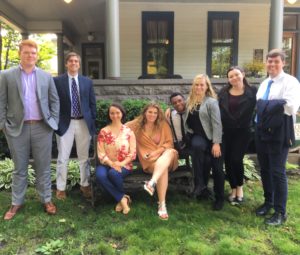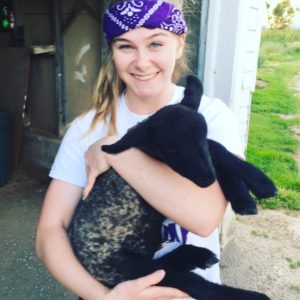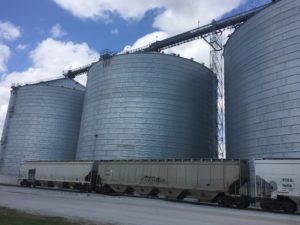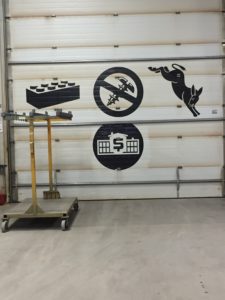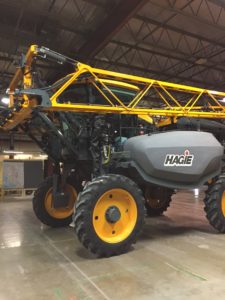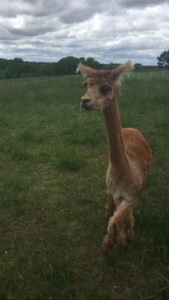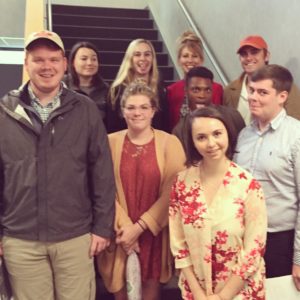5/31/17
A couple of days before I boarded the plane to leave for Iowa, most of my friends and family told me to take pictures and videos of everything that I saw and did so that I could cherish those photos forever. Now, as I am leaving what I considered to be my home and family for the past 3 weeks, I am realizing that the photos I took are not what I believe to be my most prized possessions from this journey. The memories that I made cannot be accurately represented by a camera lens. I can show my friends these images, but they will never understand what it was like to make mozzarella cheese with reggae music playing in the background, or to bottle feed a lamb with a llama nuzzling your nose. It wasn’t just the farm experiences that made this journey one to remember forever, but it was the people that participated in every adventure with me. It was the people that caused an epic scene in restaurants because eating “family style” is apparently very complicated. It was the people that almost died with me in the van several times because roads in Iowa are rougher than in South Carolina. It was also the people that carried me up a mountain when my knee was hurting. Some memories cannot be explained to those who were not there to experience them, but that is okay. This adventure will only be truly cherished by the ones who went through everything together and the bond that we created will remain strong forever.
On one of our first nights in Iowa, Jim Sweeney took our group to go “mushroom hunting”. We were split into two different teams to tackle more ground before it got too dark. My team consisted of HN, Ethan, Josh and myself. We were told what kind of mushroom to look for, where it should be located, and given a bag to put them in once we found them. We searched for these mushrooms for approximately 1 hour, crawling through thorn bushes in the woods and using the flashlight on our phones once it started getting darker. Our team was never successful in finding the mushrooms, but I think this experience is when we truly started to form a close bond. We spent the majority of our time searching on top of a hill and at the bottom of this hill was a creek with running water that we could hear when we were quiet enough. With the sunset behind us and deer running over the hills, our group found something more special than the mushrooms. I knew that from this moment on, the adventures we shared together would be special and memorable.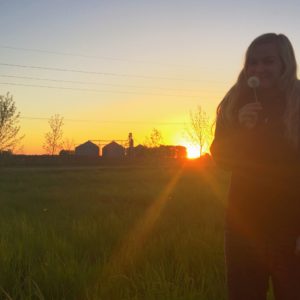
Almost 8 weeks before I boarded the plane to Iowa, I had ACL reconstruction performed on my knee. To be honest, I was very nervous to be participating in a study away program just two months after this major surgery, especially since my knee had a small, but constant pain due to scar tissue atrophy. I prepared myself the best I could, having a list of physical therapy exercises to perform each day and medicine for when the pain became great enough. The one thing I didn’t prepare myself for was the amount of support I would receive from my classmates and professor. The first day that I had true pain in my knee was when we visited the Seed Savors Apple Orchard. In order to get to this orchard, we had to walk approximately half a mile up a mountain with uneven paths to conquer. This was the most walking I had to complete since the surgery and I was afraid I would not be able to make it to the top. About halfway up, the pain was bad enough that I wanted to stop, but Ethan decided that he could carry me on his back for the rest of the hike. I never expected to need this much help on the trip and I definitely didn’t expect anyone to actually provide this help if I did end up needing it. There were also a few other moments in the trip where we had to walk long distances and I needed help for a few minutes. Both Ethan and Reid were always willing to help me in these situations and I am very grateful that I had people who were looking out for me every day. The kindness I received from my classmates is something that I will never forget.
Our group was split into 3 different houses to live in for our time in Iowa. Josh and I were graciously placed with the Knutsons, a couple who we eventually began calling “Mom” and “Dad”. Every morning they would fix us coffee and ask us what our plans were for the day. Every night they would want to know what experiences we had, what we learned, and what we enjoyed the most. They were interested in our lives and what plans we had for the remaining of our summer. Our last night, we arrived back at the house late at night when they were already asleep, but to our surprise, they had presents waiting for us in the kitchen. Josh and I almost started crying when we saw the beautifully wrapped gifts with a heartfelt note written to both of us individually. Morris, Diane, and Staci were three other individuals who I will remember for the rest of my life. The hospitality that we received as a group from these people was unbelievable. We never went hungry, were served some of the best food I have ever had in my life, and were always entertained in the Stole house. Without these people, Iowa would have seemed like a foreign country to me and sometimes it was. But when I was in the Knutson or Stole house, I felt at home and I am very grateful that we were fortunate enough to have people who truly cared about us and treated us like family. Saying goodbye was not easy and of course leaving the Knutson dog, Finnegan, was difficult, but I will be sure to keep in contact with all of those who had such a dramatic impact on my Iowa adventure.
As I said before, photos and words cannot express the impression that Iowa had on my life. I can tell somebody that I ate bee larva and I can describe the amount of joy I felt as I held a piglet in my arms for the first time. But will they truly understand my emotions when I describe these memories? Thinking about them now as I am in flight to Atlanta, I smile. I know that I will continue to be close friends with my classmates who became my family. We already have plans for next semester when we are back at Furman together. I must say, I am excited to be returning home to my family and mountains, but I am going to miss every, little thing about Iowa. Fortunately, two horses moved in across the road from my house and I told my mom a few days ago to warn our neighbors that I will be over there very often for the next couple of weeks because I will be homesick of Iowa, something that I never thought would be possible. This trip with these people is something that I will remember and cherish forever. I will never be able to express the emotions that I feel just thinking about the memories that were made. I hope one day, I will be able to go back and visit what I considered to be my home for a short time. Thank you, Iowa.
